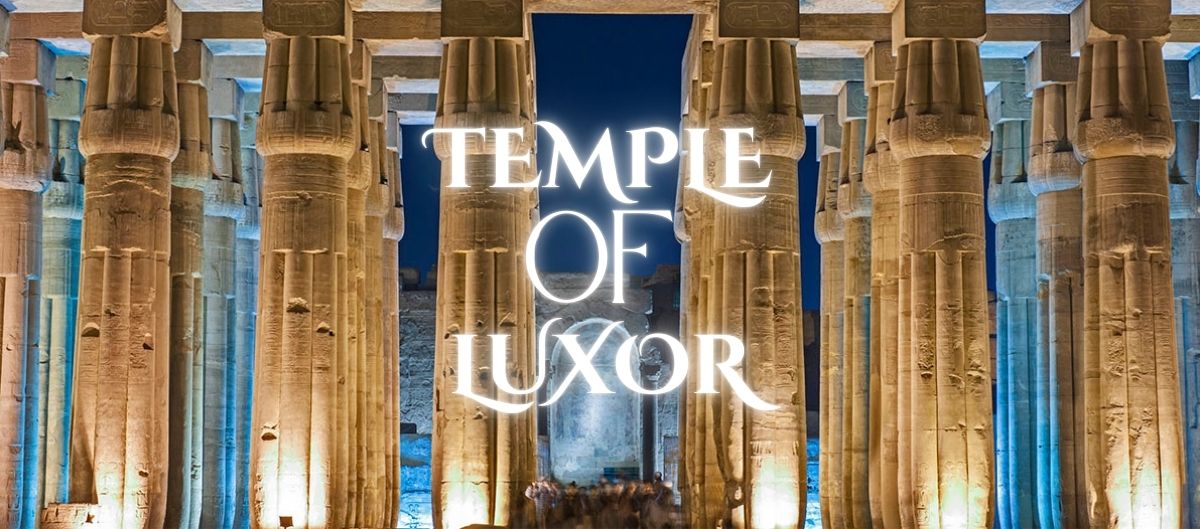Temple of Luxor: Listen to the Pharaohs Whisper Across Time

We visited late on a January afternoon just as the sun was setting. Egypt had presented many of its most magnificent temples but this, the Temple of Luxor, was the most impressive. In both scale and complexity it follows the traditional temple design. Its construction began in 1392 BC and continued across the centuries as testimony of deity of the ruling pharaohs.




It is a masterpiece credited to many…from Amenhotep III through Tutankhamun with major initial architectural influences of Ramses II and later by Alexander the Great, ending with Roman occupation during the second and third centuries AD.

Containing ten sections, Luxor Temple is massive. The entrance alone is over two hundred feet wide and includes the Avenue of the Sphinxes, First Pylon, Roman Camp, Mosque, Court of Ramses II, Court of Amenhotep III, Chapel of Mut, Chapel of Khonsu, Chapel of Amun, and finally the Birth Chamber. This is similar in design ( but not the scale!) to many of the temples I visited.

Dedicated to the deities Mut, the goddess of the sky, Khonsu; the god of the moon, and Amun later known as Ra, the sun god, its walls tell a beautifully detailed and impressive story of the politics, religious practices, lifestyle and accomplishments of the inhabitants of the Nile Delta.



The temple walls were originally made of mud bricks in order to symbolize the separation between the world of the Egyptians and their deities.


I wandered the property, now more familiar with many of the recurrent symbols: the key of life or ankh, the lotus and the papyrus.
The ankh is T-shaped with a droplet-shaped hoop at its top representing life on Earth, eternal life, and immortality. The hoop represents the sun, the horizontal bar represents the horizon, and the vertical bar represents the sun’s path. It’s shape also mimics the verdant Nile delta region.


In ancient Egypt, the lotus flower represented Upper Egypt (the south) while the papyrus plant symbolized Lower Egypt (the north), and when depicted together, they represented the unification of the entire country; both were considered sacred plants and frequently appeared in Egyptian art and symbolism.
Metropolitan Museum of Art

Also known as the Southern Sanctuary, the temple’s main function was during the annual Opet celebrations, when the statues of Amun, Mut and Khonsu were brought from Karnak, along the Avenue of Sphinxes, and reunited here. The Opet Festival marked the renewal of the Nile (after the yearly catastrophic flooding), and the king’s divine rule.
As night fell, the temple was slowly being illuminated, making it even more ominous and dramatic in the half-darkness. The last room on my visit was at the end of the complex, the pharaoh Amenhotep III birth room.


The walls of the birth room of the Luxor Temple tell the story of how Queen Mutemwiya became the mother of Amenhotep III and parallels biblical accounts of an infant birth which changed our modern world in perhaps a similar fashion as did this king’s arrival.


It offers a fascinating story of the immaculate conception, annunciation and birth of Amenhotep III over thirteen hundred years years before the story of Jesus Christ would be told.
If you’d like to visit I’d recommend hiring a local guide who can navigate ticketing, entry and offer insider knowledge and insight. Travel in Egypt is safe; people are extremely welcoming, helpful and thrilled to share their country with you.
Related Posts
Queen Hatshepsut: Woman of Mystery and Power Lies with Kings
This queen, as one of Egypt’s only female pharaohs, singularly re-wrote the rules of Egyptian …
February 8, 2025Truly Astonishing Facts About Egypt’s Incomparable Pyramids and the Great Sphinx of Giza
At first my jet-lagged brain could not process more than their looming yet beautiful presence, …
February 5, 2025

Leave A Comment